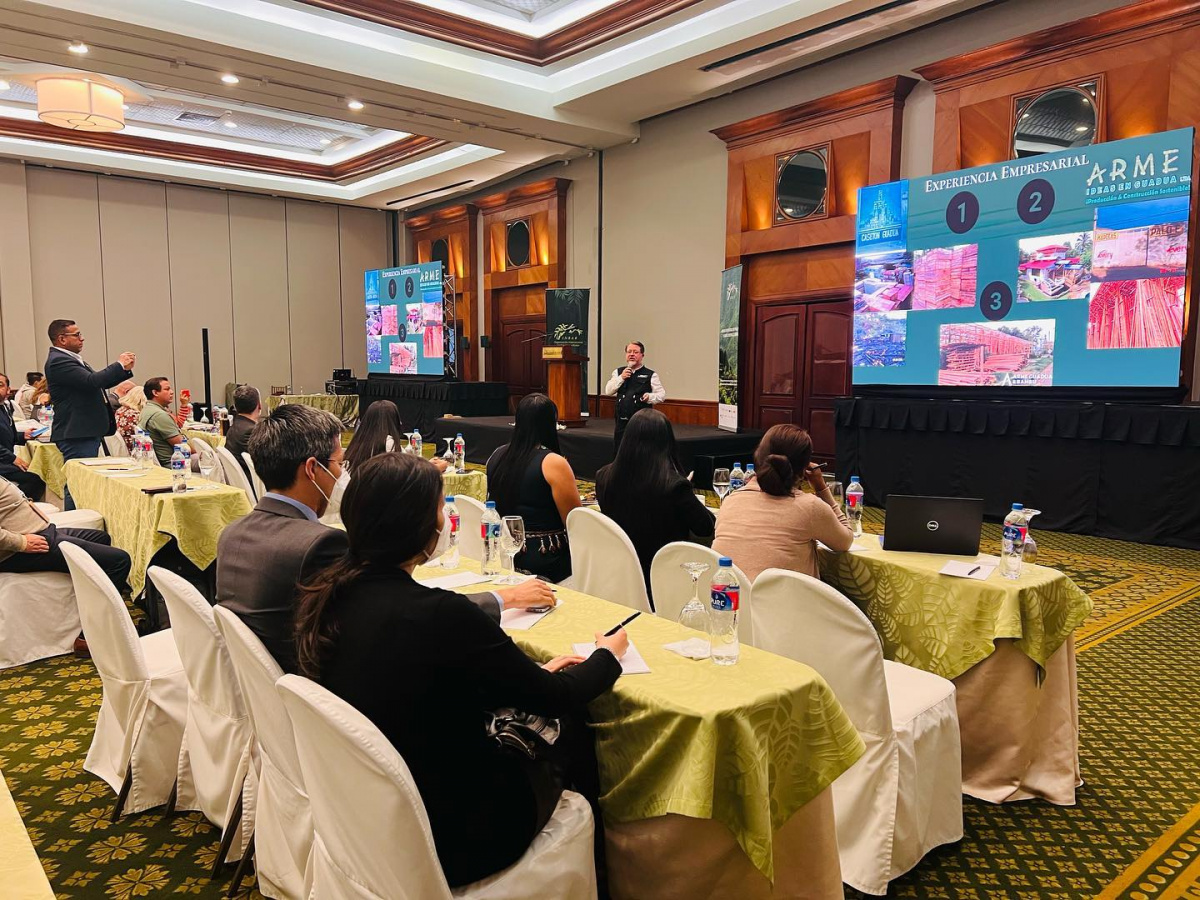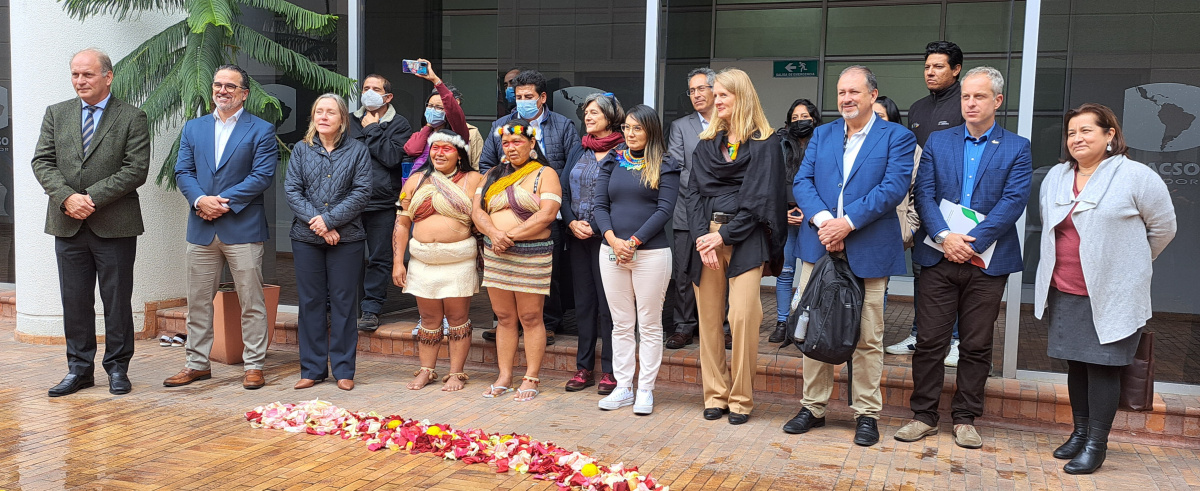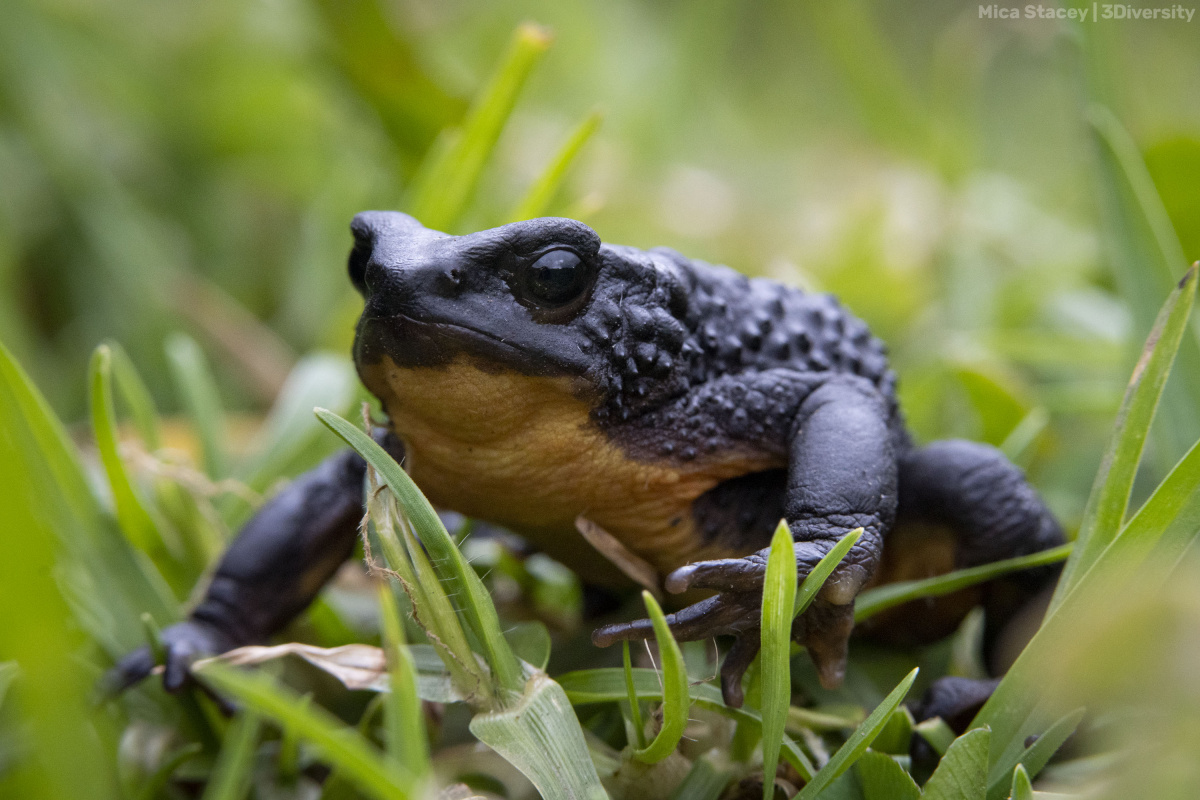Circular Economy Projects in Eastern and Southern Africa: Changing Lives and Reducing the Flow of Plastic Waste into the Marine Environment
IUCN supports a number of local level circular economy initiatives as part of its Marine Plastics and Coastal Communities project (MARPLASTICCs), aimed at reducing the amount of plastic waste that leaks into the marine environment. The initiatives have produced some positive results in the past year.
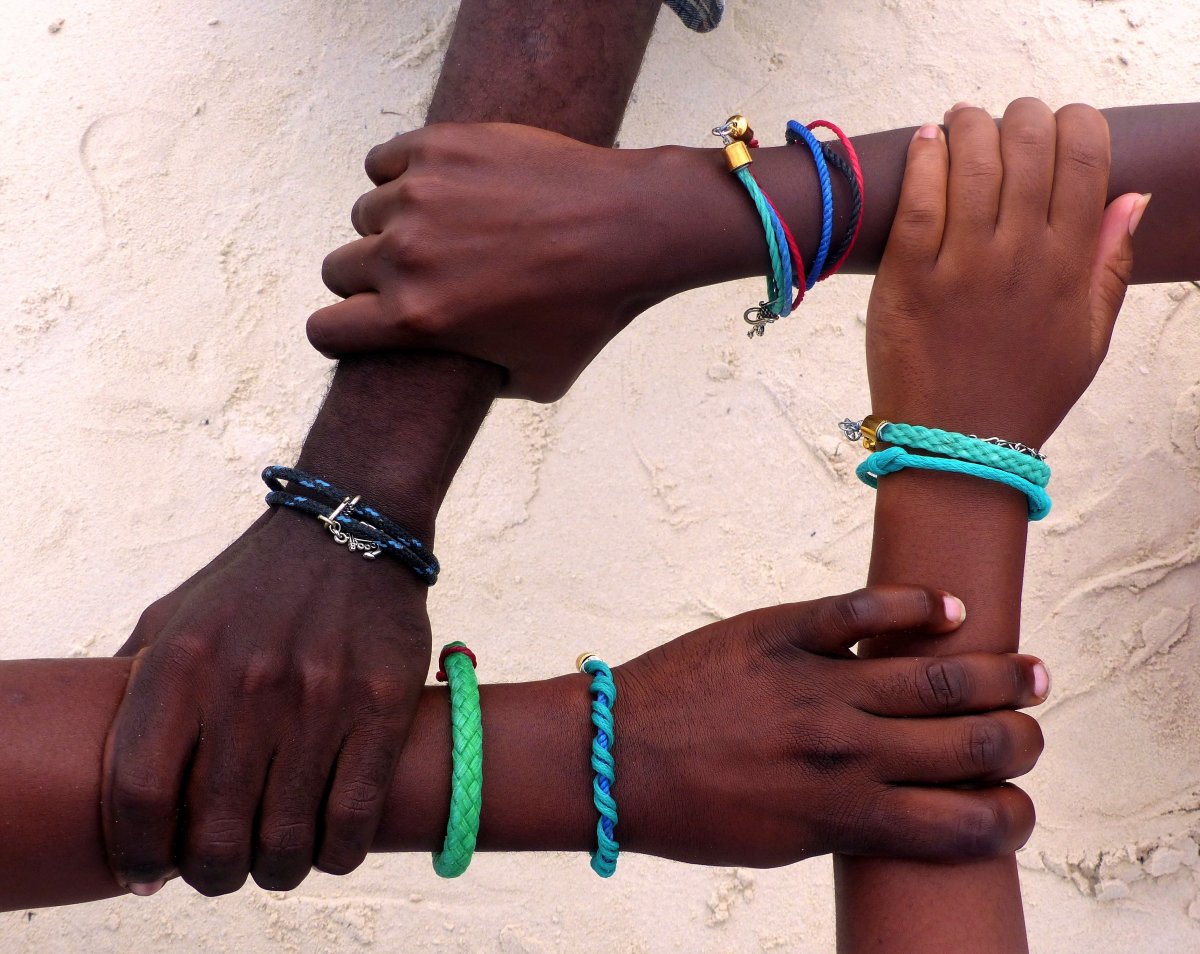
Fishing Net Bracelets
Photo: Steve Trott
With a financial grant of USD 50,000 in each of the five MARPLASTICCs countries – Kenya, Mozambique, South Africa, Thailand and Viet Nam – these circular economy projects are mobilising communities, creating new livelihood opportunities for disadvantaged groups, and reducing the flow of plastic waste into the marine environment. They are helping to close the plastic tap and making a social impact.
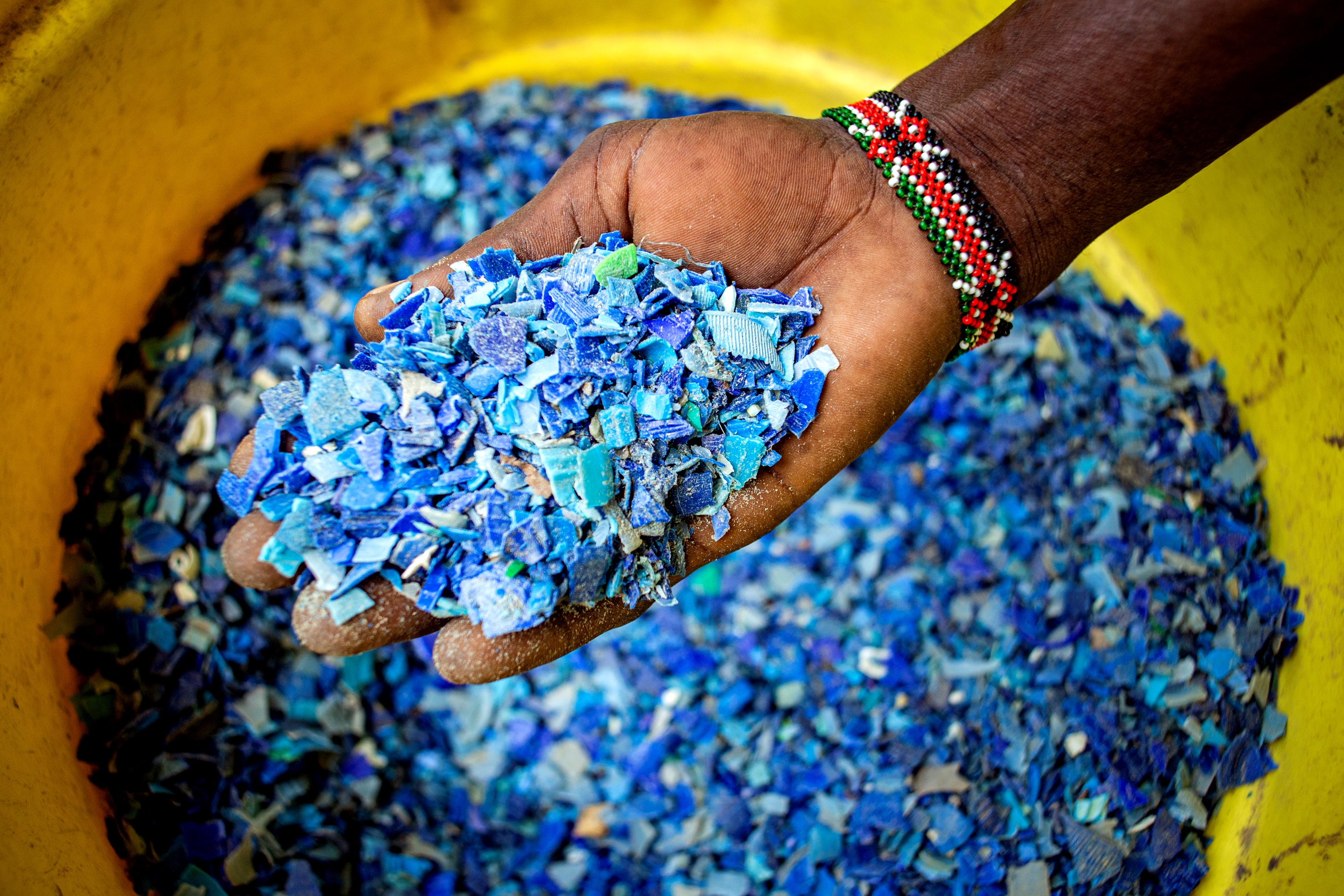 Machine-shredded plastic waste
Photo: Watamu Marine Association, Kenya
Machine-shredded plastic waste
Photo: Watamu Marine Association, Kenya
To showcase the circular economy projects in Eastern and Southern Africa, IUCN supported the production of the following three comprehensive infographics that highlight the important work that these organisations and their partners are doing. Each infographic shows the project location, impacts and outcomes to date, partners engaged, and the SDGs that each project contributes to.
Kenya
The Watamu Marine Association (WMA) implements 'From Wastes to Products: Maximising impacts of community-based plastic enterprise in Watamu, Kenya', which has improved the reuse, recycling, and upcycling of plastic waste materials. It has developed community-based small business enterprises and increased employment opportunities and income benefits related to circular economy activities. The initiative is enhancing partnerships among civil society and the private and public sectors, and improving information sharing within these partnerships. WMA is scaling its operations to the larger neighbouring coastal towns of Malindi and Kilifi.
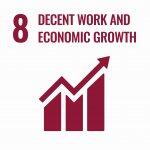 Photo: IUCN
Photo: IUCN
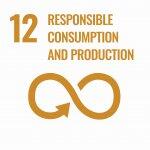 Photo: IUCN
Photo: IUCN
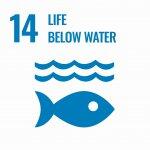 Photo: IUCN
Photo: IUCN
“The key impacts that we have experienced in this project was being able, with the support of IUCN, to purchase a truck, which has enabled us to expand our activities to other towns and reach beaches we otherwise would not have been able to reach. We also purchased a PET-crushing machine (PET is Polyethylene Terephthalate) and an injection moulder, which we use for crashing the plastics we collect from our beaches and turn it into upcycled products and improve our livelihoods. Also, we are able train community members on upcycling – all in all a win for many stakeholders.” - Julie Myra Alego, EcoWorld Recycling
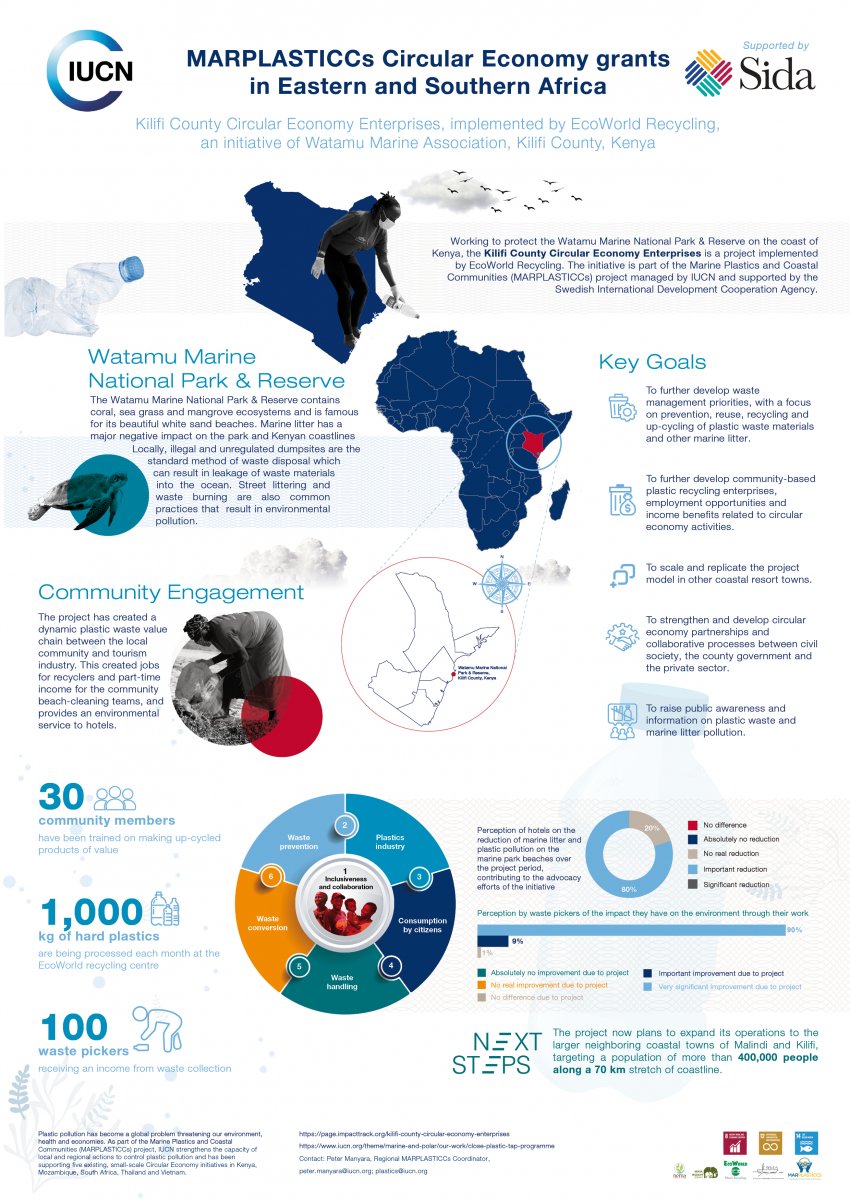 Photo: IUCN
Photo: IUCN
Mozambique
Mozambique’s Circular Economy project “Establishing plastic value chains in Vilanculos, Mozambique”, is implemented by 3R-Reduzir, Reusar e Reciclar Limitada. It has established a financially sustainable and environmentally sound value chain for plastic waste in Vilanculos, and is working towards reducing plastic leakage in Bazaruto Archipelago National Park (BANP). IUCN helped 3R establish four Ecopoints in Vilanculos where plastic waste materials are collected at cost from waste pickers, micro-enterprises, and local residents and organisations. This project showcases the benefits of implementing the circular economy in reducing marine plastic pollution while creating additional livelihood opportunities.
 Photo: IUCN
Photo: IUCN
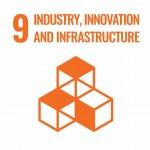 Photo: IUCN
Photo: IUCN
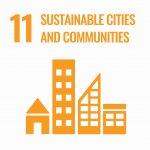 Photo: IUCN
Photo: IUCN
 Photo: IUCN
Photo: IUCN
 Photo: IUCN
Photo: IUCN
“Our wish was to transform the sector, to make it more sustainable. But when you talk about transforming a sector, you need regulation to be the framework to support that. Since 2014, 3R has been working with the Ministry of Land and Environment on regulations that could strengthen the sector. The main achievement during this period was the approval of the Extended Producer Responsibility (EPR) regulation in December 2017. This decree includes an environmental tax that will come from this material that is distributed in Mozambique, and it will be used to support initiatives related to recycling and segregation and much more.”- Maíra Valladares, Director, 3R
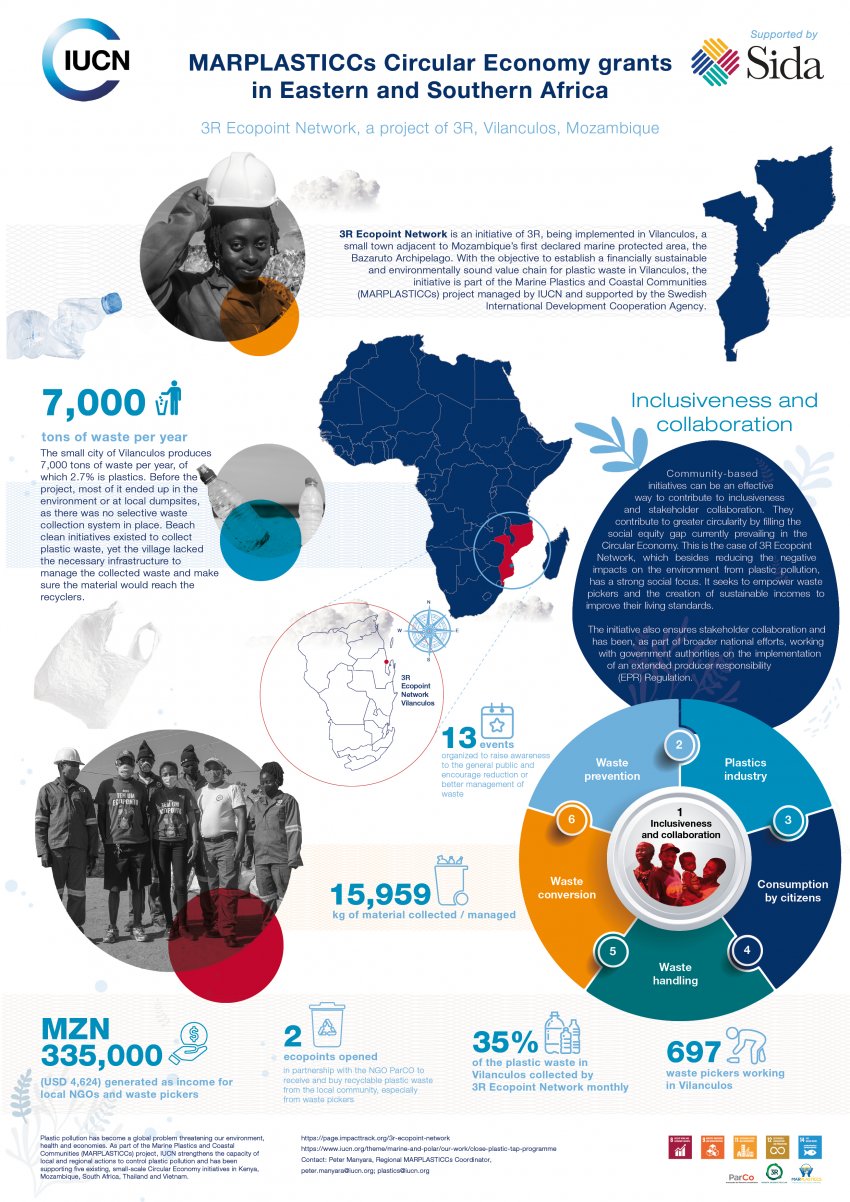 Photo: IUCN
Photo: IUCN
South Africa
South Africa’s Wildlands Conservation Trust (WILDTRUST) implements the project, “A Circular Economy Approach to Plastic Leakage in the Durban Port” which aims to restore the Durban Port ecosystem to a healthy, natural state by minimising plastic waste leakage into and out of the port. Through the project, WILDTRUST created the Blue Port initiative, to remove waste from the Durban Port. Implementation to date includes waste-trapping at key locations; developing upcycled ocean pavers out of various unrecyclable plastic waste and crushed glass; and a mobile app that the Blue Port team and the public can use to share waste collection data.
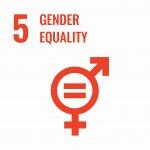 Photo: IUCN
Photo: IUCN
 Photo: IUCN
Photo: IUCN
 Photo: IUCN
Photo: IUCN
“The Blue Port project was initiated in 2019, with the ultimate goal of progressively cleaning up the Durban Port and transforming the highly degraded system into a healthy functioning state. We started cleaning up the build-up of historical waste choking the port, with the help of over 50 local youth employed through a local initiative called the YES programme (Youth Employment Services). In addition to the active clean-ups, we are trialling passive waste trapping interventions to collect the waste too. All the waste collected is monitored and tracked so we can understand the movement of waste in the port. Since the project’s inception, we have collected over 50,000kgs of waste from Durban Port.” - Rachel Kramer, Strategic Manager, WILDOCEANS
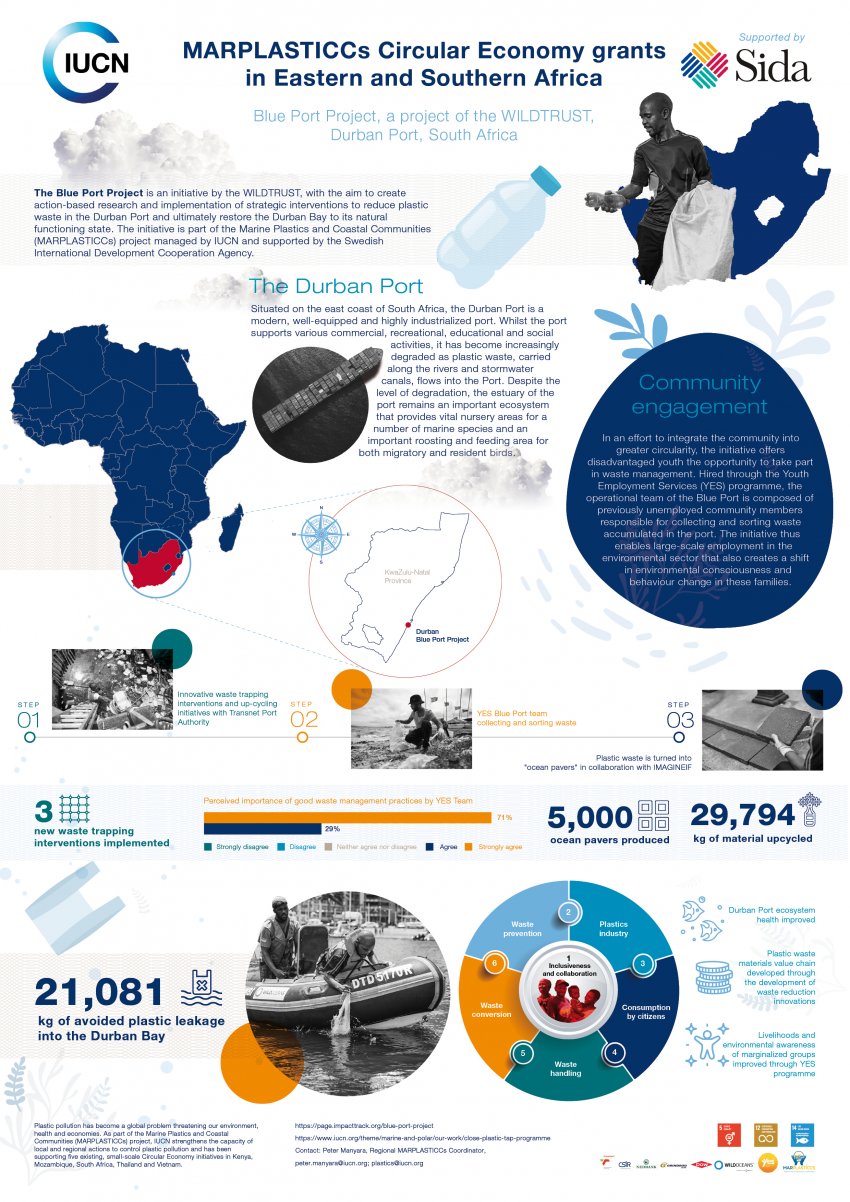 Photo: IUCN
Photo: IUCN
Impact Monitoring
To strengthen project monitoring, the Impact Track tool developed online impact monitoring pages for each project. The tool enables organizations to capture and track reliable impact data, essential to make the right decisions, access funds and thus expand their businesses. The platform provides tools to manage and communicate results in a transparent way. Visit the project impact pages from this link https://www.iucn.org/theme/marine-and-polar/our-work/close-plastic-tap-programme/marplasticcs/circular-economy-projects
Conclusion
These infographics showcase the MARPLASTICCs’ comprehensive approach to capacity building through these important and impactful circular economy initiatives. More importantly, they demonstrate the significant contributions of dedicated community groups leading the way to a more inclusive circular economy. These projects are succeeding through the stakeholders they are engaging with, including the waste and recycling industry, NGOs, the local community (particularly waste workers, students, youth and women), and the local municipality and governmental agencies – making these projects sustainable beyond the limited support from MARPLASTICCs.
------
ABOUT MARPLASTICCs:
In 2017, with generous support from the Swedish International Development Cooperation Agency (Sida), IUCN launched the Marine Plastics and Coastal Communities initiative (MARPLASTICCs), an initiative in Africa and Asia that works in five countries: Kenya, Mozambique, South Africa, Thailand, and Viet Nam. The project consists of four pillars: capacity building through circular economy projects, production of knowledge products – including the national guidance and reports on plastic pollution hotspotting, economic and regulatory policy analysis in each country, and connecting with the private sector with a business component to help businesses identify plastic leakage in their value chains.
To learn more, please visit: https://www.iucn.org/theme/marine-and-polar/our-work/close-plastic-tap-programme/marplasticcs
Supported by Sida
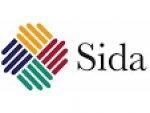 Photo: SIDA
Photo: SIDA
